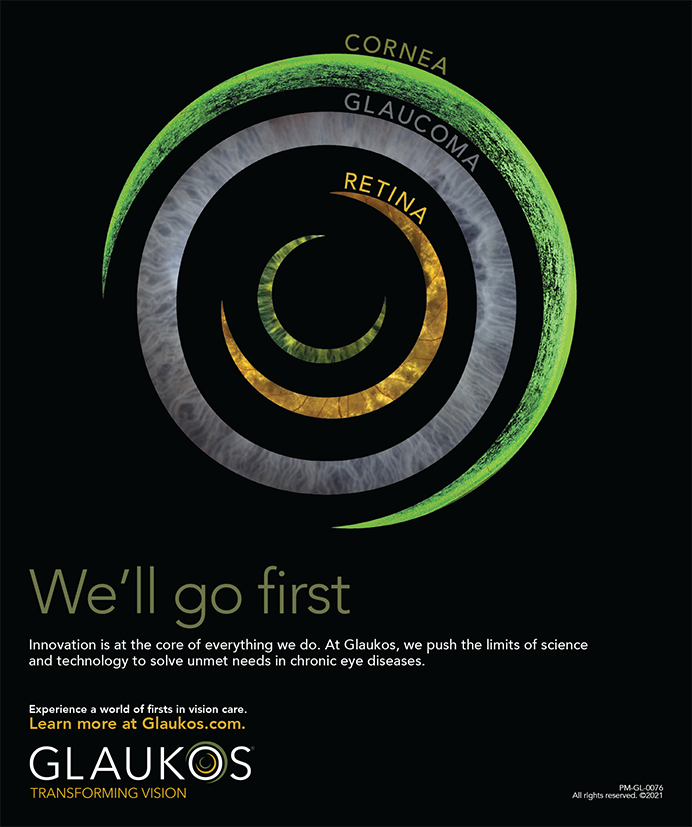I use three techniques to correct astigmatism in patients who will receive presbyopia-correcting IOLs: (1) the Trulign Toric lens (Bausch + Lomb), a toric presbyopia-correcting IOL (2) femtosecond laser arcuate incisions plus the AcrySof Restor IOL (Alcon), Tecnis Multifocal IOL (Abbott Medical Optics), or Crystalens (Bausch + Lomb) (3) LASIK with a multifocal lens
CHOOSING A LENS
My first step is to determine whether the patient prefers an accommodating or a multifocal IOL. My staff and I will discuss in detail with patients the strengths and weaknesses of each type of technology. Our goal is to match the individual with the technology that better suits his or her needs and minimizes the side effects that would bother him or her the most. In my experience, accommodating lenses tend to be associated with a loss of contrast sensitivity but less glare and fewer halos at night. My patients who receive multifocal lenses tend to have better reading vision and a broader range of vision, and they generally experience a shorter adaptation period. I avoid multifocal IOLs in patients with retinal pathology or glaucoma, because these lenses can degrade the optical pathway.
If the patient wants to read small print without glasses, for example, I recommend a multifocal lens. If he or she values driving at night and does not mind wearing glasses to read small print, I may recommend the Trulign Toric lens. My staff and I explain that this IOL corrects astigmatism, which removes the need for laser arcuate incisions or LASIK. About half of my patients choose each type of technology. A larger proportion of those with high degrees of astigmatism opt for the Trulign Toric IOL.
MY APPROACH
A patient who chooses an accommodating lens will receive either the Crystalens or the Trulign Toric lens. I typically use the latter when the eye has more than 0.75 D of astigmatism. After removing the cataract, I measure astigmatism and IOL power intraoperatively using the ORA System (WaveTec Vision). Occasionally, based on intraoperative aberrometry readings, I will switch to a Crystalens or vice versa.
Typically, I no longer perform arcuate incisions on eyes that receive a Crystalens but instead choose the Trulign Toric IOL. If the latter is not available in the power a patient needs, then I will consider combining arcuate incisions with a Crystalens. For patients receiving a multifocal lens, I plan to create a laser arcuate incision if the eye has less than 2.00 D of astigmatism. I explain to patients preoperatively that they may need a LASIK enhancement after cataract surgery to correct residual astigmatism.
If the patient has more than 2.00 D of astigmatism, then I will perform LASIK as a secondary procedure to the cataract surgery. I plan the laser arcuate incisions and perform intraoperative aberrometry. I will adjust the degree of the astigmatic correction by either opening the laser arcs or lengthening the arcuate incisions with a diamond blade, as guided by the ORA System.
I usually wait 3 months or until the refraction and topography have stabilized before performing LASIK. In some cases, I will precut the LASIK flap prior to cataract surgery and then lift the flap and perform the laser treatment about 1 month after cataract surgery or when the refraction has stabilized.
CONCLUSION
My practice charges the same amount for the accommodating and multifocal IOLs we offer. The cost for the use of the femtosecond laser is bundled into the cost of the entire procedure. Patients pay a fee for planned LASIK, which prompts many of them to select the Trulign Toric lens rather than another IOL. That said, all three methods discussed herein can be used effectively to address patients’ presbyopia and astigmatism.
V. Nicholas Batra, MD, is the medical director of the Batra Vision Medical Group in San Leandro, California. He is a consultant to Alcon, Abbott Medical Optics, Bausch + Lomb, and WaveTec Vision. Dr. Batra may be reached at drbatra@batravision.com.


